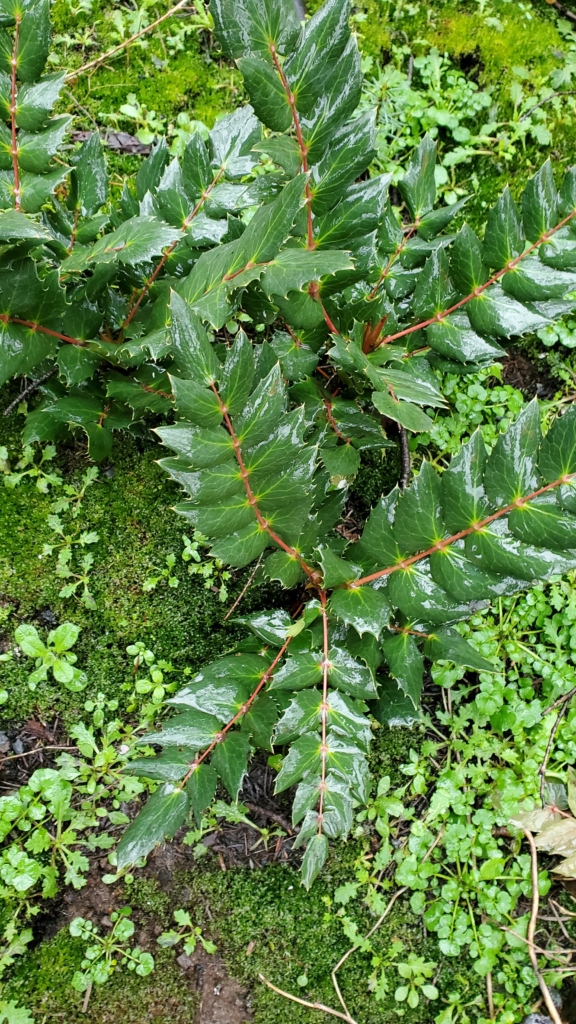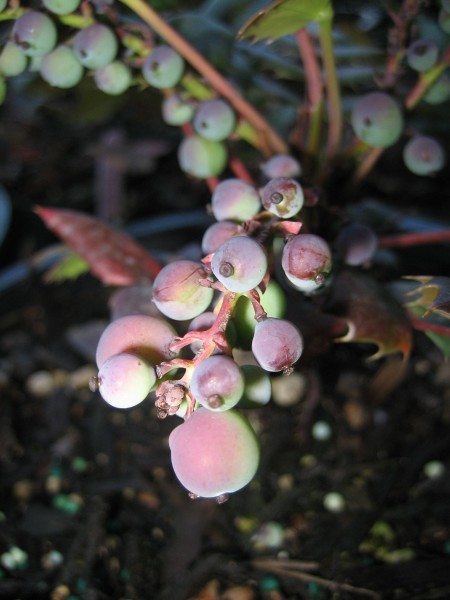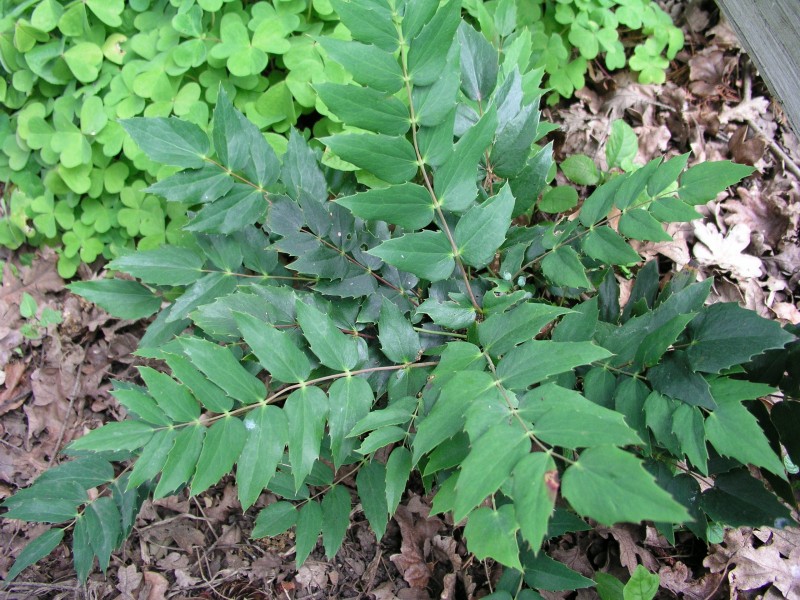Cascade Oregon Grape
Berberis nervosa
Plant Description
Cascade Oregon grape is a low-growing, evergreen shrub native to forests of the Pacific Northwest. It has leathery, holly-like leaves arranged in distinctive horizontal tiers, which turn reddish-purple in winter. In spring, it produces clusters of cheery yellow flowers that attract pollinators, followed by tart bluish berries eaten by birds and other wildlife (including some courageous and creative people). Typically found in the understory of coniferous forests, it thrives in shade and helps stabilize soil, making it both ecologically valuable and a useful plant for native landscaping. It makes a great groundcover for dry shade.
Creeping and Cascade Oregon grape are both low-growing Oregon grapes, but they can be distinguished by growth form and leaf arrangement. Creeping Oregon grape spreads horizontally with a trailing, creeping habit and has shorter, more rounded leaflets, often forming loose mats. In contrast, Cascade Oregon grape grows in upright clumps with leaves held in distinctive flat, layered tiers, and its leaflets are longer, narrower, and more sharply toothed. Habitat preference also differs slightly: Cascade Oregon grape is more common in shaded coniferous forest understories between the Cascade ridge and the coast, while creeping Oregon grape often occurs in drier, more open forests and rocky sites east of the Cascades. Both grow well in the Willamette Valley.
Plant Details
| Life Forms | |
|---|---|
| Habitats | |
| Soil and Moisture Conditions | |
| Special Uses | |
| Shade Preference | |
| Mature Height | 2' |



